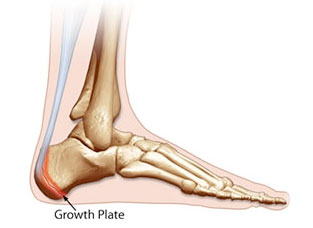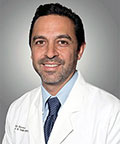- Home
- Foot & Ankle Conditions
- Pediatric Conditions
- Growth Plate Fractures
Growth Plate Injuries: Causes, Symptoms, & Treatment Options

What are Growth Plates?
Growth plates, also known as epiphyseal plates, are soft points on the end of a child's bone that form solid bone as your child matures. Growing bones each have one growth plate at either end.
A suspected injury to the growth plate needs to be evaluated by a specialist right away. An injury to a growth plate can cause it to harden and “close” prematurely, meaning it stops producing new bone before your child is done growing. If left untreated, a growth plate injury could stunt bone growth.
- How common are growth plate injuries?
- How do growth plate fractures of the foot occur?
- What are the symptoms of a fractured growth plate?
- How can the podiatrists at University Foot & Ankle Institute diagnose your child's growth plate injury?
- What are the common types of growth plate fractures?
- What are the treatments for a growth plate foot fracture?
- Recovering from a growth plate fracture
- Choose UFAI for the best pediatric podiatrists
- Growth plate injury FAQs
- Can adults suffer growth plate injuries?
- Can you play soccer on a growth plate ankle injury?
- Does growth plate injury affect height?
- How to prevent growth plate injuries?
- How long does a growth plate injury take to heal?
-
Foot and Ankle Surgeon and Director of University Foot and Ankle Institute
Dr. Bob Baravaria DPM, FACFAS is a Board-Certified Podiatric Foot and Ankle Specialist. He is an assistant clinical professor at the UCLA School of Medicine and serves as Director of University Foot and Ankle Institute.
Dr. Baravarian has been involved in athletics his entire life and played competitive tennis in high school and college. He has an interest in sports medicine, arthritis therapy, and trauma/reconstructive surgery of the foot and ankle. He is also fluent in five languages (English, French, Spanish, Farsi, and Hebrew),
 Great information on my condition. Non-surgery options were fully discussed and implemented. They were not satisfactory so surg...Donald M.
Great information on my condition. Non-surgery options were fully discussed and implemented. They were not satisfactory so surg...Donald M. Overall, it was a great experience. I've been coming to Dr. Kellman for about a year and he and his staff are very helpful.Vanessa W.
Overall, it was a great experience. I've been coming to Dr. Kellman for about a year and he and his staff are very helpful.Vanessa W. I have horrible feet. Bad DNA. My aunt and my mother have both had multiple surgeries. I had hallux rigidis in both feet and ne...Citizen L.
I have horrible feet. Bad DNA. My aunt and my mother have both had multiple surgeries. I had hallux rigidis in both feet and ne...Citizen L. ExcellentDebasish M.
ExcellentDebasish M. Everyone was friendly and professional.Victor L.
Everyone was friendly and professional.Victor L. Very efficient and an excellent serviceHorwitz J.
Very efficient and an excellent serviceHorwitz J. Chaos in the office checkin. We weren’t forewarned about the iPad data collection. That made me late for a following appointmen...Carl C.
Chaos in the office checkin. We weren’t forewarned about the iPad data collection. That made me late for a following appointmen...Carl C. Dr Nalbandian is an exceptional doctor and person. The staff respectfully & compently delt with an issue I had regarding a prev...Karen M.
Dr Nalbandian is an exceptional doctor and person. The staff respectfully & compently delt with an issue I had regarding a prev...Karen M. Visiting the office is a pleasurable occurance.Thomas J.
Visiting the office is a pleasurable occurance.Thomas J. Very nice helpful people. Dr Adloo was great! Friendly & easy to talk to.Jan E.
Very nice helpful people. Dr Adloo was great! Friendly & easy to talk to.Jan E. Dr Kelman and his staff are always wonderfully caring and respectful to my father who has Alzheimer's dementia.Erland E.
Dr Kelman and his staff are always wonderfully caring and respectful to my father who has Alzheimer's dementia.Erland E. Thank you for being there for your patients.Dieter B.
Thank you for being there for your patients.Dieter B.
